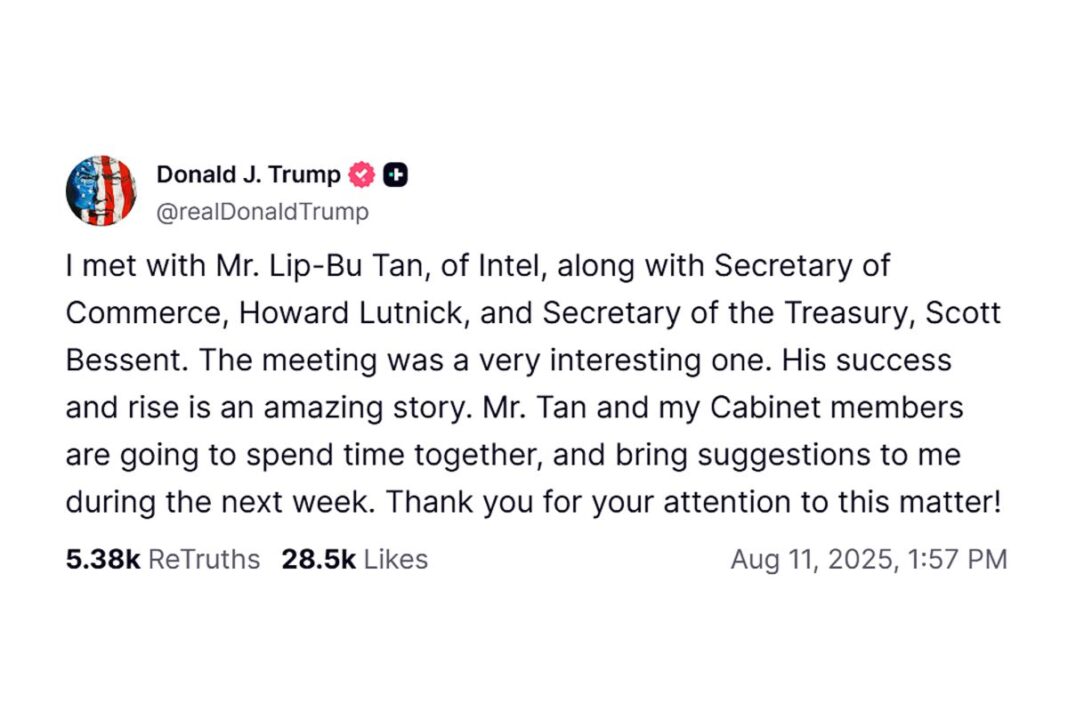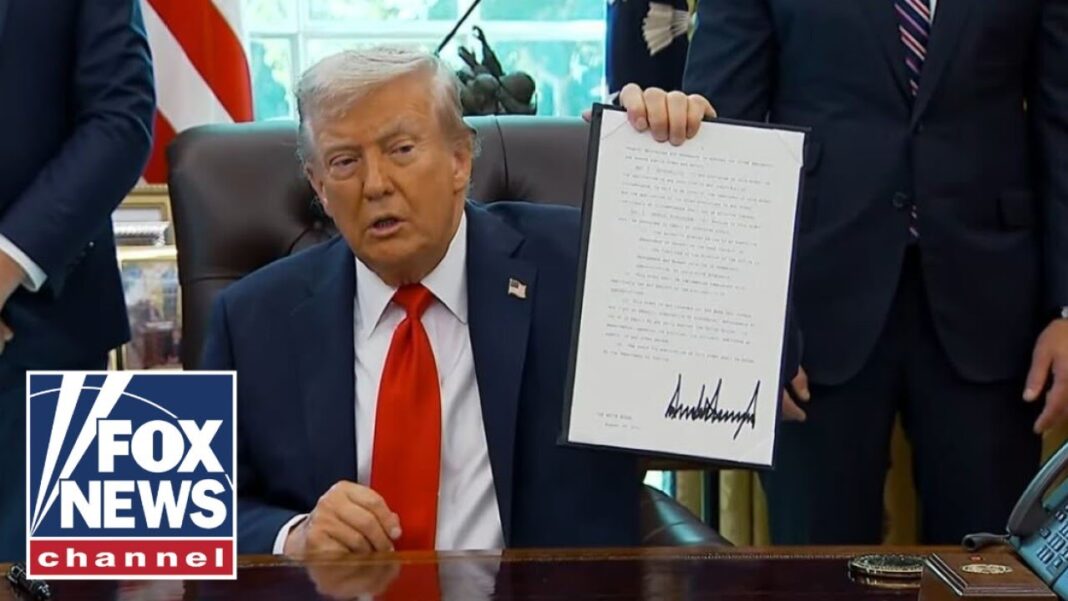‘There’s a reason that the world, especially Western, relatively capitalist countries, have moved away from state ownership,’ Cato analyst Tad DeHaven said.
The agreement between the Trump administration and Intel Corporation that gave the federal government a 10 percent ownership stake in the company sparked a rally in its shares but drew fire from conservatives who say that the government should not be in the business of owning companies.
“The United States of America now owns 10% of Intel, one of our great American technology companies,” Commerce Secretary Howard Lutnick posted on X.
BIG NEWS: The United States of America now owns 10% of Intel, one of our great American technology companies.
— Howard Lutnick (@howardlutnick) August 22, 2025
This historic agreement strengthens U.S. leadership in semiconductors, which will both grow our economy and help secure America’s technological edge.
Thanks to Intel… pic.twitter.com/AYMuX14Rgi
“This historic agreement strengthens U.S. leadership in semiconductors, which will both grow our economy and help secure America’s technological edge.”
Intel, once the leading manufacturer of microchips, saw its stock price tumble from a high of more than $68 per share in 2021 to $23 on Aug. 21 over concerns that it has fallen behind its competitors as demand shifts to new markets such as artificial intelligence.
The company’s revenue fell from $79 billion in 2021 to $53 billion in 2024, due to slowing demand for its central processing units for personal computers and market share lost to its rival AMD, according to Forbes.
Following news that the government would buy a stake in the company, its shares rallied to more than $25 per share before falling back slightly by market close.
“As the only semiconductor company that does leading-edge logic R&D and manufacturing in the U.S., Intel is deeply committed to ensuring the world’s most advanced technologies are American made,” Lip-Bu Tan, CEO of Intel, said in a statement.
“President Trump’s focus on U.S. chip manufacturing is driving historic investments in a vital industry that is integral to the country’s economic and national security.”
Here are five things you need to know about the transaction.
| 1. Shares Are in Exchange for Awarded Grants |
| 2. Government Will Be Largest Shareholder |
| 3. America Dependent on Taiwan for Advanced Semiconductors |
| 4. Deal Praised by Liberals, Criticized by Conservatives |
| 5. Deal Could Face Legal Challenges |
1. Shares Are in Exchange for Awarded Grants
Approximately $8 billion in grants to Intel were already approved under the 2022 CHIPS Act, as part of $39 billion in subsidies to various tech companies intended to shift more chip production from Asia to the United States.
In return for the grants, Intel had pledged to invest in its manufacturing and research facilities in Arizona, New Mexico, Ohio, and Oregon.
Those grants will now be converted to equity, which advocates say gives the government the potential to earn profits. The terms of the deal state that the federal government would swap a total of more than $11 billion in grants already awarded to Intel for the 10 percent stake, at a discounted price of $20.47 per share.
Intel posted on its website that “the government’s equity stake will be funded by the remaining $5.7 billion in grants previously awarded, but not yet paid, to Intel under the U.S. CHIPS and Science Act and $3.2 billion awarded to the company as part of the Secure Enclave program.”
An additional $2.2 billion in federal grants has already been paid to the company.








